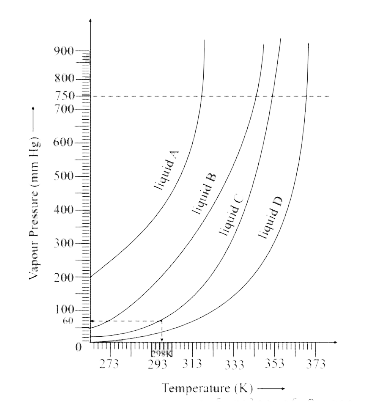Assertion : At high altitude a person, from plain areas, may experience altitude sickness.
Reason : At high altitude atmospheric pressure is generally high leading to symptons like nausea, fatigue, etc.
The correct Answer is:C
To solve the assertion-reason question, we need to analyze both the assertion and the reason provided.
1. Understanding the Assertion:
- The assertion states that "At high altitude, a person from plain areas may experience altitude sickness."
- This is true because individuals who are not acclimatized to high altitudes often experience symptoms such as nausea, fatigue, and headaches due to the lower oxygen levels available at such elevations.
2. Understanding the Reason:
- The reason states that "At high altitude, atmospheric pressure is generally high leading to symptoms like nausea, fatigue, etc."
- This statement is false. At high altitudes, atmospheric pressure is actually lower than at sea level or in plain areas. The decrease in pressure results in lower oxygen availability, which is what causes altitude sickness.
3. Conclusion:
- Since the assertion is true and the reason is false, the correct answer to the assertion-reason question is that the assertion is true, but the reason is false.
Final Answer:
- The assertion is true, and the reason is false. Therefore, the correct option is C.
- The assertion states that "At high altitude, a person from plain areas may experience altitude sickness."
- This is true because individuals who are not acclimatized to high altitudes often experience symptoms such as nausea, fatigue, and headaches due to the lower oxygen levels available at such elevations.
- The reason states that "At high altitude, atmospheric pressure is generally high leading to symptoms like nausea, fatigue, etc."
- This statement is false. At high altitudes, atmospheric pressure is actually lower than at sea level or in plain areas. The decrease in pressure results in lower oxygen availability, which is what causes altitude sickness.
- Since the assertion is true and the reason is false, the correct answer to the assertion-reason question is that the assertion is true, but the reason is false.
- The assertion is true, and the reason is false. Therefore, the correct option is C.
Topper's Solved these Questions
- ORGANISMS AND POPULATIONBOOK - NCERT FINGERTPS ENGLISHCHAPTER - ORGANISMS AND POPULATIONEXERCISE - Organisms And Population
175 Videos
- ORGANISMS AND POPULATIONBOOK - NCERT FINGERTPS ENGLISHCHAPTER - ORGANISMS AND POPULATIONEXERCISE - NCERT
20 Videos
- MOLECULAR BASIS OF INHERITANCEBOOK - NCERT FINGERTPS ENGLISHCHAPTER - MOLECULAR BASIS OF INHERITANCEEXERCISE - Molecular Basis Of Inheritance
151 Videos
- PRACTICE PAPERSBOOK - NCERT FINGERTPS ENGLISHCHAPTER - PRACTICE PAPERSEXERCISE - Practice paper
150 Videos
Similar Questions
Knowledge Check
Assertion : At high altitudes , liquids boil at lower temperatures in comparison to that at sea level .
Reason : At high altitudes , atmospheric pressure is low .AIf both assertion and reason are true and reason is the correct explanation of assertion .BIf both assertion and reason are true but reason is not the correct explanation of assertion .CIf assertion is true but reason is false .DIf both assertion and reason are false .At high altitudes the partial pressure of oxygen is less than that at the ground level. This leads to
Alow concentrations of oxygen in the blood and tissuesBhigh concentrations of oxygen in the blood and tissuesCrelease of dissolved gases and formation of bubbles of nitrogen in the bloodDthickening of blood and tissuesAt high altitudes the partial pressure of oxygen is less than that at the ground level. This leads to the,
ALow concentrations of oxygen in the blood and tissues.BHigh concentrations of oxygen in the blood and tissues.CRelease of dissolved gases and formation of bubbles of nitrogen in the blood.DThickening of blood and tissues.
Assertion : At higher peaks of mountains, people suffer from high altitude sickness (sluggish feeling, breathlessness etc.) due to lesser oxygen intake at each breather
Reason : Air at sea level is dense because it is compressed by the mass of the air above it. The atmospheric pressure at higher peaks of mountains is lower causing the air at those heights to be much less dense than at sea level.
View SolutionThe " mountain sickness" in persons climbing to high altitudes with any aid of oxygen cylinders is due to
View SolutionThe variation of vapour pressure of different liquids with temperature is shown in figure

At high altitude, atmospheric pressure is low (say 60 mm Hg). At what temperature liquid D boils?
View SolutionVisiting high mountains may cause altitude sickness in men living in plan areas. Prime of this is
View SolutionAscent of high mountain may cause altitude sickness in people. Primary cause of this is
View Solution